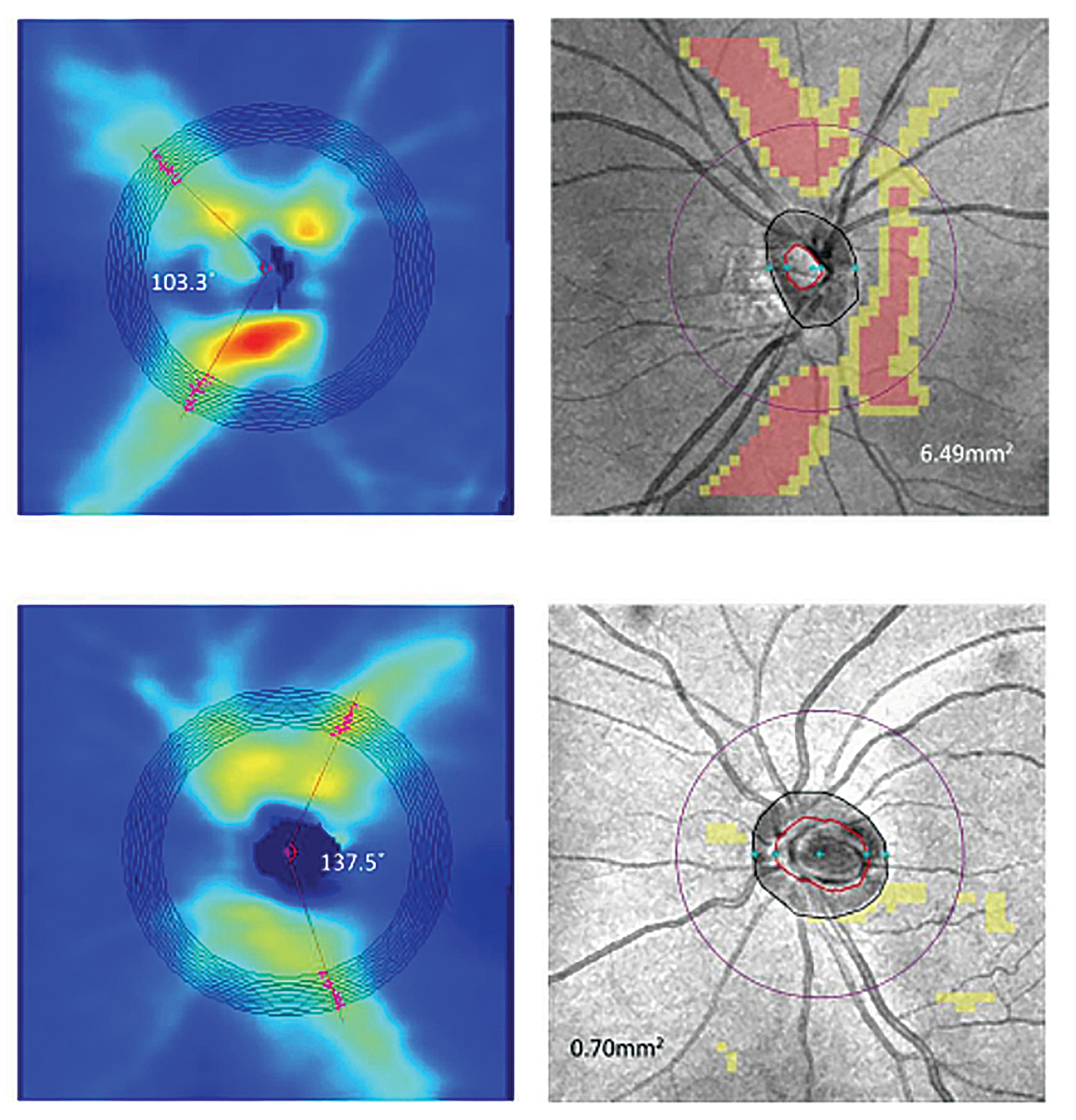 |
| RNFL thickness (left) and deviation maps (right) show the increased vulnerability to glaucoma brought about by high myopia. The top images are a -6.75D myopia with an axial length of 27.26mm; at bottom is a -2.00D myopia with axial length of 26.61mm. Photo: Andrew Rouse, Lauren Sabol, Tej Ramdass. Click image to enlarge. |
In China, the list of ocular and systemic parameters associated with open-angle glaucoma (OAG) and previous longitudinal studies were only investigated within a five-year period. A recent study has reviewed the data over a 10-year period and has noted that high myopia was associated with a 7.3-fold increased incidence of the disease as compared with emmetropic eyes. The average 10-year incidence of OAG was 3.0%—comparable with studies in other ethnicities over the same time.
The study reviewed data 2,695 individuals in the Beijing Eye Study who were re-examined in 10 years’ time. Incident OAG was found in 75 participants among 2494 individuals free of glaucoma at baseline. The 10-year OAG incidence increased from 1.8 in individuals aged 40 to 49 years old, to 5.9% in participants ages 70 and over. The study classified eyes as emmetropia/hyperopic (>-1D), low myopia: ≤-1D and >-3 D), moderate myopia (≤-3D and >-6D) and high myopia ≤-6D)
The risk of developing OAG increased by a factor of 1.72 for each mm higher axial length. OAG incidence was highest in the high myopia group (13.3%; odds ratio, OR: 7.3), followed by the moderate myopia group (8.1%; OR: 4.2) and the low myopia group (6.2%; OR: 3.2).
OAG additionally increased by a factor of 1.18 for each mm Hg higher IOP at baseline, by a factor of 6.1 for each 1/10 increase in vertical cup-to-disc ratio (CDR), in addition to a factor of 1.06 for each year higher in age. It decreased by a factor of 0.98 for each µm thicker central corneal thickness (CCT).
The findings believed that their findings “should be of importance to clinical protocols and screening strategies.”
Wang YX, Yang H, Wei CC, et al. High myopia as risk factor for the 10-year incidence of open-angle glaucoma in the Beijing Eye Study. Br J Ophthalmol. February 22, 2022. [Epub ahead of print]. |

